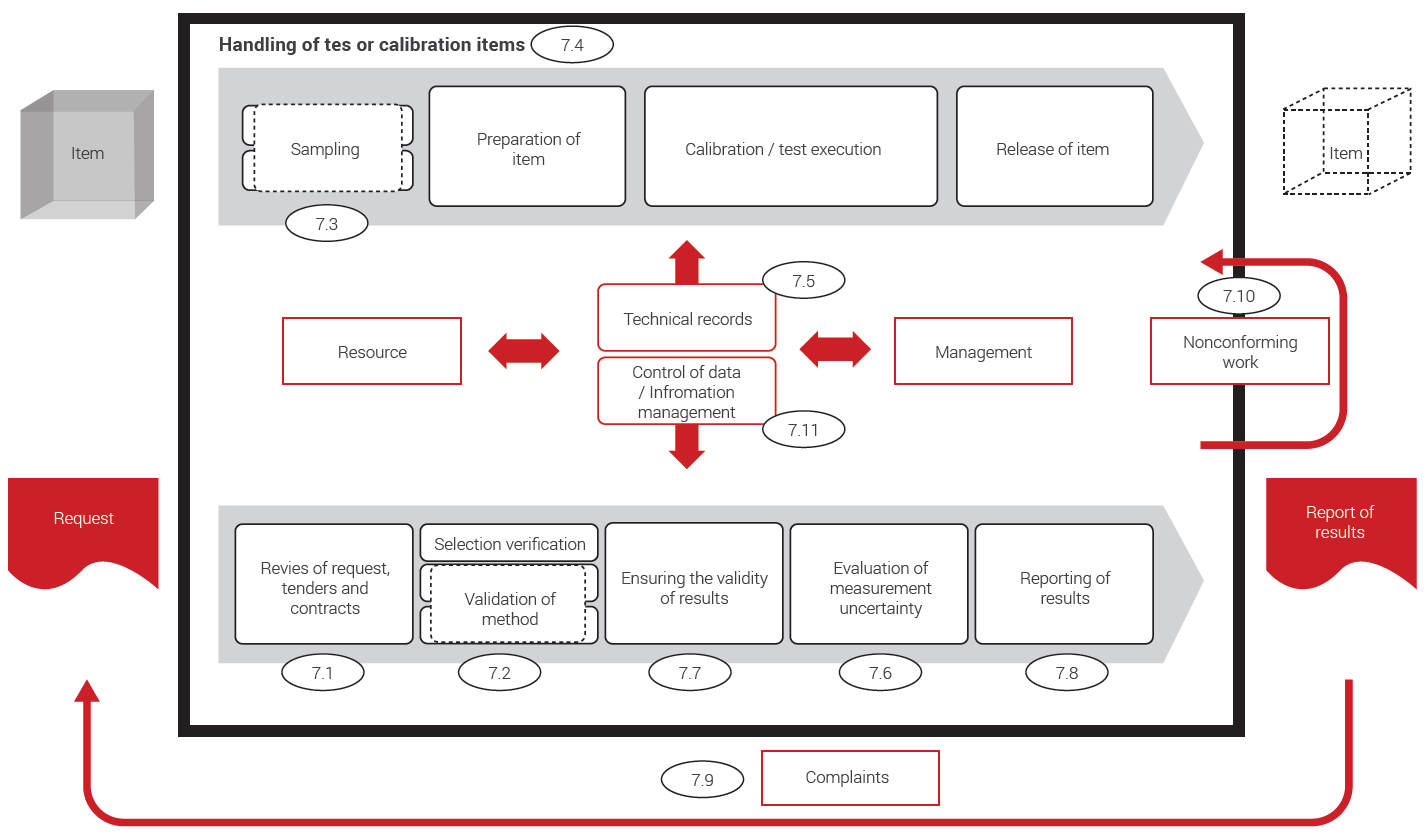Main requirements of the 2017 version of ISO/IEC 17025
General requirements: This clause includes impartiality and confidentiality, whereby the laboratory activities are to take into account impartiality and safeguard the confidentiality of all the information obtained during the execution of laboratory activities.
Structural requirements: This clause represents the legal entity that defines and documents the range of laboratory activities. Additionally, it identifies the management, the laboratory activities, the organization and management structure, the responsibility, authority and interrelationships of all personnel.
Resource requirements: This clause highlights the importance of the provision of the resources such as the personnel, facilities and environmental conditions, equipment, metrological traceability, and the externally provided products and services used to support the operation of the laboratory.
Process requirements: In this clause, it is mentioned that the process requirements are deployed as follows:
- Review of requests, tenders, and contracts;
- Selection, verification, and validation of methods;
- Sampling;
- Handling of test or calibration items;
- Technical records;
- Evaluation of measurement uncertainty;
- Assuring the validity of results;
- Reporting of results;
- Complaints;
- Nonconforming work;
- Control of data – information management.
The clauses presented above are included in the following scheme which represents the operational processes of a laboratory.
Management system requirements: This clause states that the laboratory has two options to choose when implementing a management system, Option A or Option B.
Option A: This option lists the main requirements for implementing a Laboratory Management System. This means that the Laboratory can implement directly a management system based on the requirements of ISO/IEC 17025. In addition, the laboratory can choose to incorporate the requirements of ISO 9001 that are relevant for performing laboratory activities.
Option B: When a laboratory chooses to implement a management system through Option B, they have to operate in accordance with the requirements of ISO 9001, in a way that fulfills requirements 4 to 7 of the ISO/IEC 17025 standard.
However, as it is stated in ISO/IEC 17025, both options are intended to achieve the same result in the performance of the management system and compliance with clauses 4 to 7.
Another change in the 2017 version of the ISO/IEC 17025 standard is the modification of the Annexes.
ISO/IEC 17025:2005 version included the following Annexes:
- Annex A (informative) Nominal cross-reference to ISO 9001:2000
- Annex B (informative) Guidelines for establishing applications for specific fields
Meanwhile, ISO/IEC 17025:2017 version includes the following Annexes:
- Annex A (informative) Metrological traceability
- Annex B (informative) Management system options



